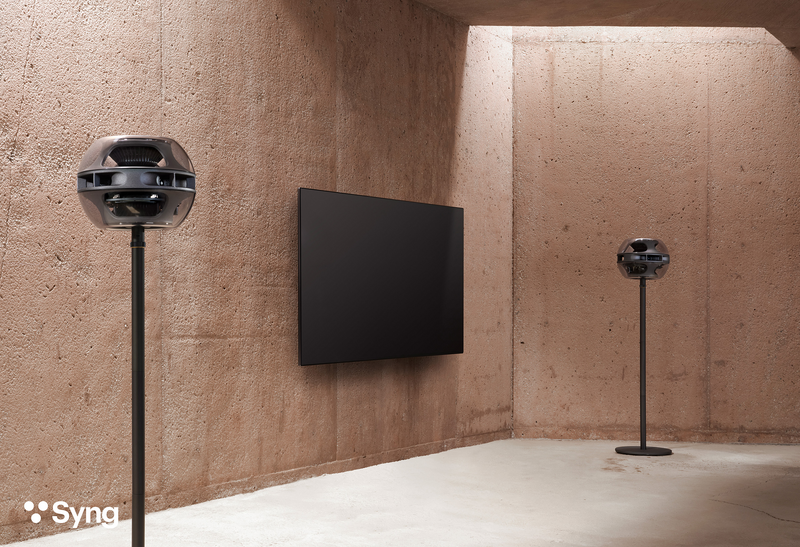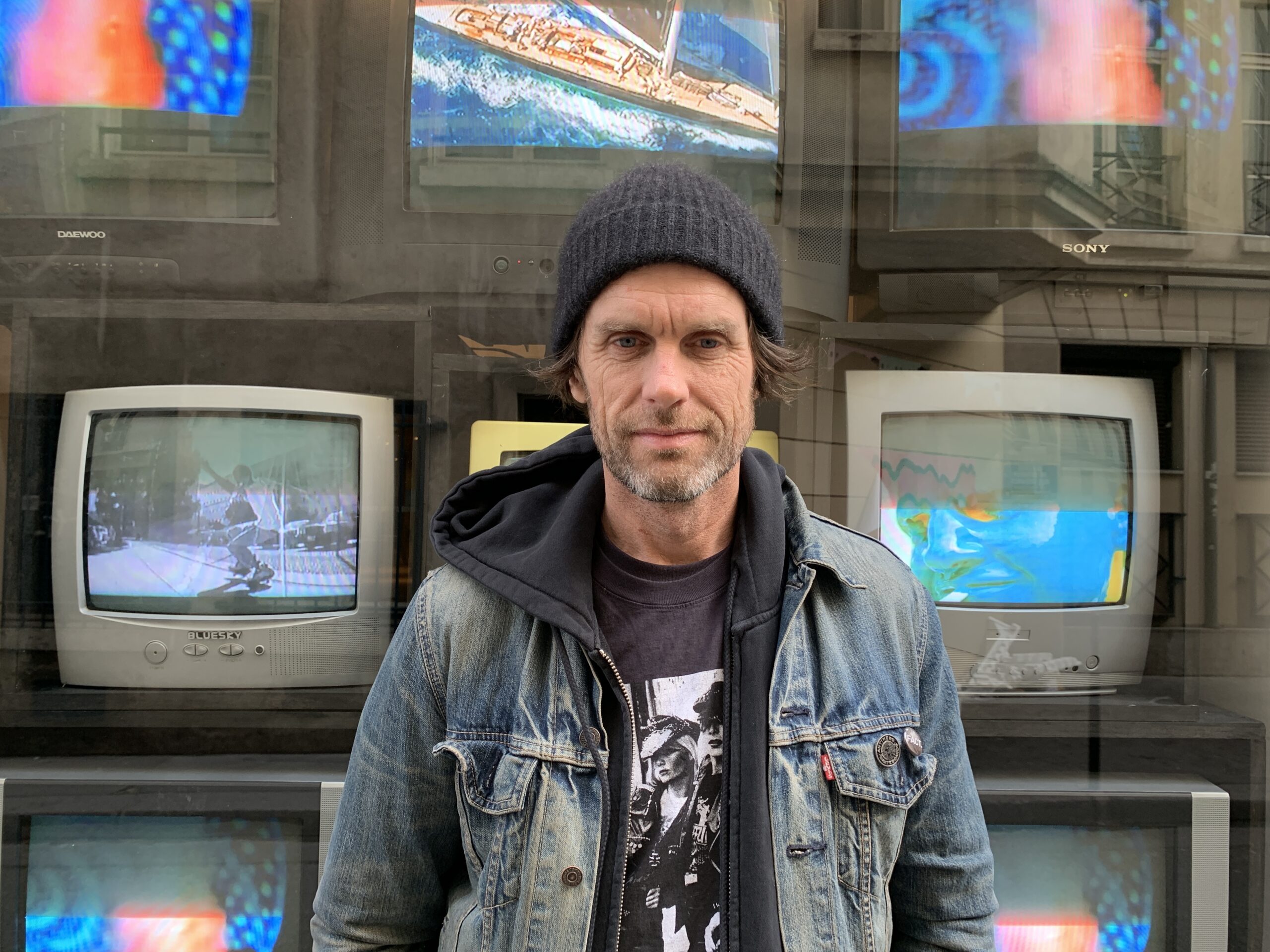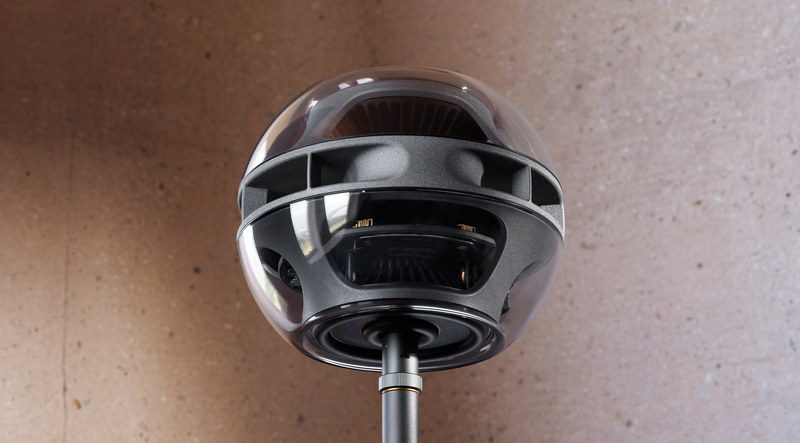Can’t make the show? Then the next best way to hear your favorite artists is through a Syng speaker.
We saw – or rather, heard – this firsthand. During a recent stop by Syng’s (pronounced: sing) headquarters in Venice Beach, SPIN wanted to put the company’s trademark speaker – officially dubbed the Cell Alpha – to the test.
And the best way to do that? By blasting Dillinger Escape Plan, obviously.
Sonically, the speakers lived up to the challenge. About 20 seconds into “Milk Lizard,” it felt as if the disbanded metal band was putting on a reunion show in your living room; the drums snapped crisply and with precision, the bass rumbled with the force of an Eliminator motorboat engine, and Ben Weinman’s guitar sliced through the room like a fork through flan. The only thing missing was having to dodge the spittle coming from Greg Puciato’s lips as he seemingly belted the song out three feet from your face.

The demo was conducted in a modestly-sized room with wood floors and four Syng speakers being used; one tabletop speaker in the rear of the room, two speakers on poles that were separated by about 12 feet in the front of the room, and one Cell Alpha hanging in the center of the room like a futuristic disco ball. (The table stand speaker costs $2,399, the floor stand speaker costs $2,499, and the ceiling mount is sold separately for $349.) From a design standpoint, the speakers are black orbs that have a flat top and bottom and see-through plastic around the perimeter. If you imagined what a home speaker would look like in 2047, there’s a good chance this would be it.
The key takeaway after listening to a few other, tamer, songs, including Elton John’s “Rocket Man,” was evident: Syng’s claim that its cells go far beyond the experience music fans get from a standard pill speaker is warranted.
But for Damon Way, Syng’s co-founder and chief brand officer, delivering a first-class listening experience is only half of the battle.
“We’re working to bridge culture and technology,” Way said, with his understated tone hinting at his roots growing up in the San Diego skate scene.

This plan – merging a company’s product with a vibrant subculture – is one that’s worked for Way before. He co-founded DC Shoes in 1994, and soon after the company’s shoes were being worn by popular pro skaters like Josh Kalis and Danny Way, Damon’s brother. A decade later, Quicksilver bought DC Shoes for $87 million.
When it comes to the technology, Syng has the design chops down. Way co-founded Syng with Christopher Stringer, a longtime Apple industrial designer who worked on the iPhone and iPad, among other gadgets. Apple’s sleek yet minimalist design approach has made its way to Syng, with the Cell Alpha looking like it could’ve been a background prop in “Interstellar.” Investors have bet big on the Way-Stringer partnership so far, with Syng raising more than $50 million to date.
The Cell Alpha, according to Syng, is the first “triphonic” speaker on the market, with three microphones embedded in the speaker – allowing it to detect where it is in the room, both in relation to the walls and the other speakers, if the owner has more than one. The Syng Space app, which allows customers to control the speakers from their phones, offers a number of options for owners to adjust their music listening experience. For example, users can direct where they want the sound to primarily come out of the speaker on the app, allowing users to better direct how the music circulates through a room.

Launching a high-end product is pointless, though, Way said, if it isn’t connected to something bigger.
“If you ignore culture, you have a hollow brand – you have a brand that’s only selling product,” Way said. “And a lot of companies are successful doing that. But for me, it’s not fulfilling to just sell a product without any story tied to creativity and culture.”
Without naming names, Way believes this is a critical ingredient Syng’s competitors are missing – a mistake that has created an opening for his company to stand apart. Brands like Nike, Adidas, Stussy and Palace have been able to pull this off in the fashion world, Way believes, and now he’s trying to make it happen at the intersection of tech and art.
To do this, Way has worked to create inroads into the music and artistic subcultures of Los Angeles and other major cities through the Syng Creator Network. The network, Way said, is simply a “project to engage with different creators.” Under this umbrella is a Syng program called “In The Studio,” which takes a look at “what drives artists creatively,” Way said. The first episode, which was released in May, featured Shepard Fairey, who is best known for founding Obey Clothing and for his “Andre the Giant has a Posse…” street art campaign.
Syng’s other video series, “The Space Between,” highlights emerging artists like Matthewdavid, a musician and founder of Leaving Records who Way called a “strong community leader within the L.A. music underground.” And beyond the content the company is putting out, Syng looks to connect with artists and musicians face-to-face by sponsoring events at trendy spots like In Sheep’s Clothing, a three-story record shop and music space in L.A.
Of course, this is a great way for Syng to associate with influential and creative people – to branch out beyond being seen as another audio company. But the street runs both ways, Way said. Syng wants to help promote and foster emerging artists, while at the same time taking those close ties with artists and funneling their feedback into the products Syng puts out. It’s a synergy that reminds Way of the close connection between the ‘80s punk scene – and later, the ‘90s indie rock scene – and the skate world that helped both communities flourish. Way said he already has ideas for creator tools to add to the company’s app thanks to its collaborations with artists.
“We like to build a relationship that’s symbiotic [between artist and company],” Way said. “It’s important for us to build strong, foundational communities in music, across genres and subcultures and communities. That’s absolutely critical to what we’re doing.”




